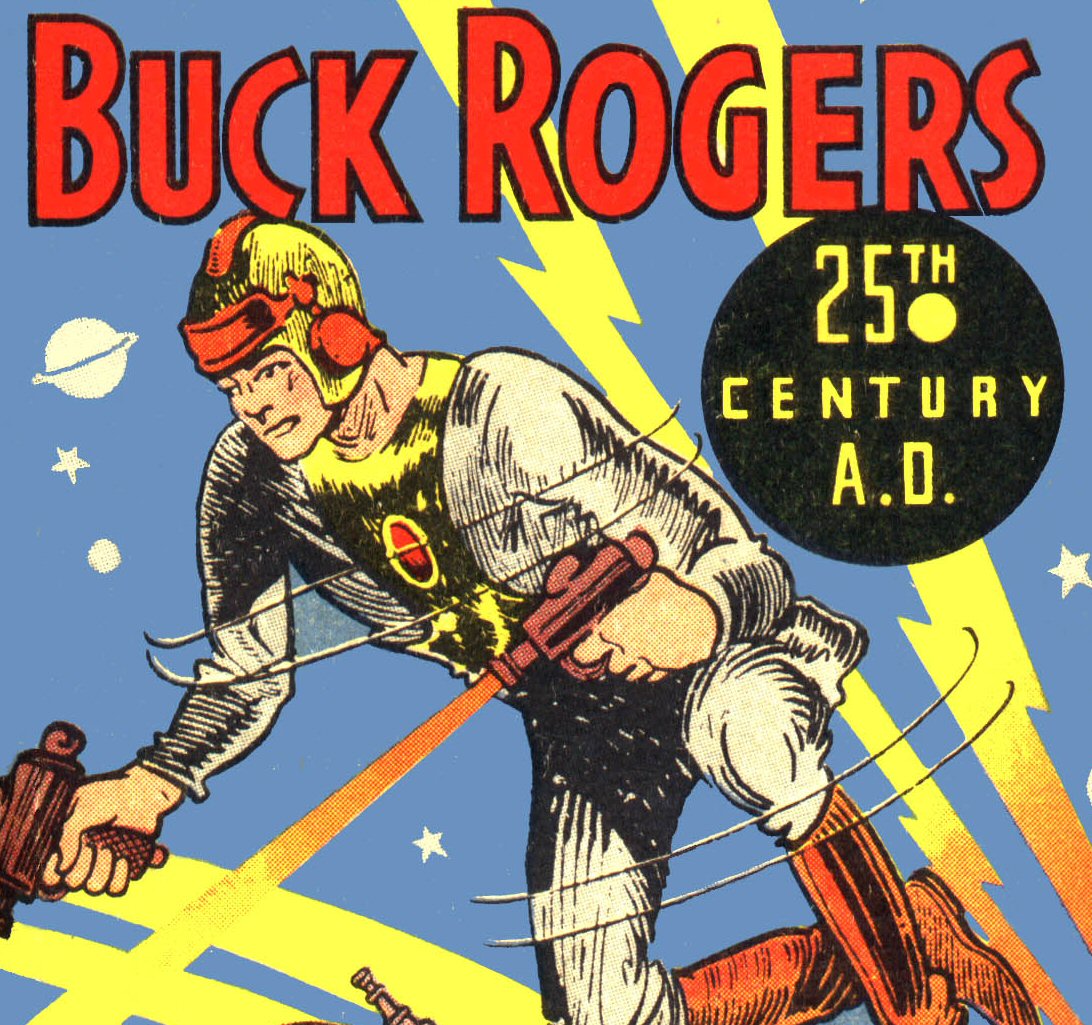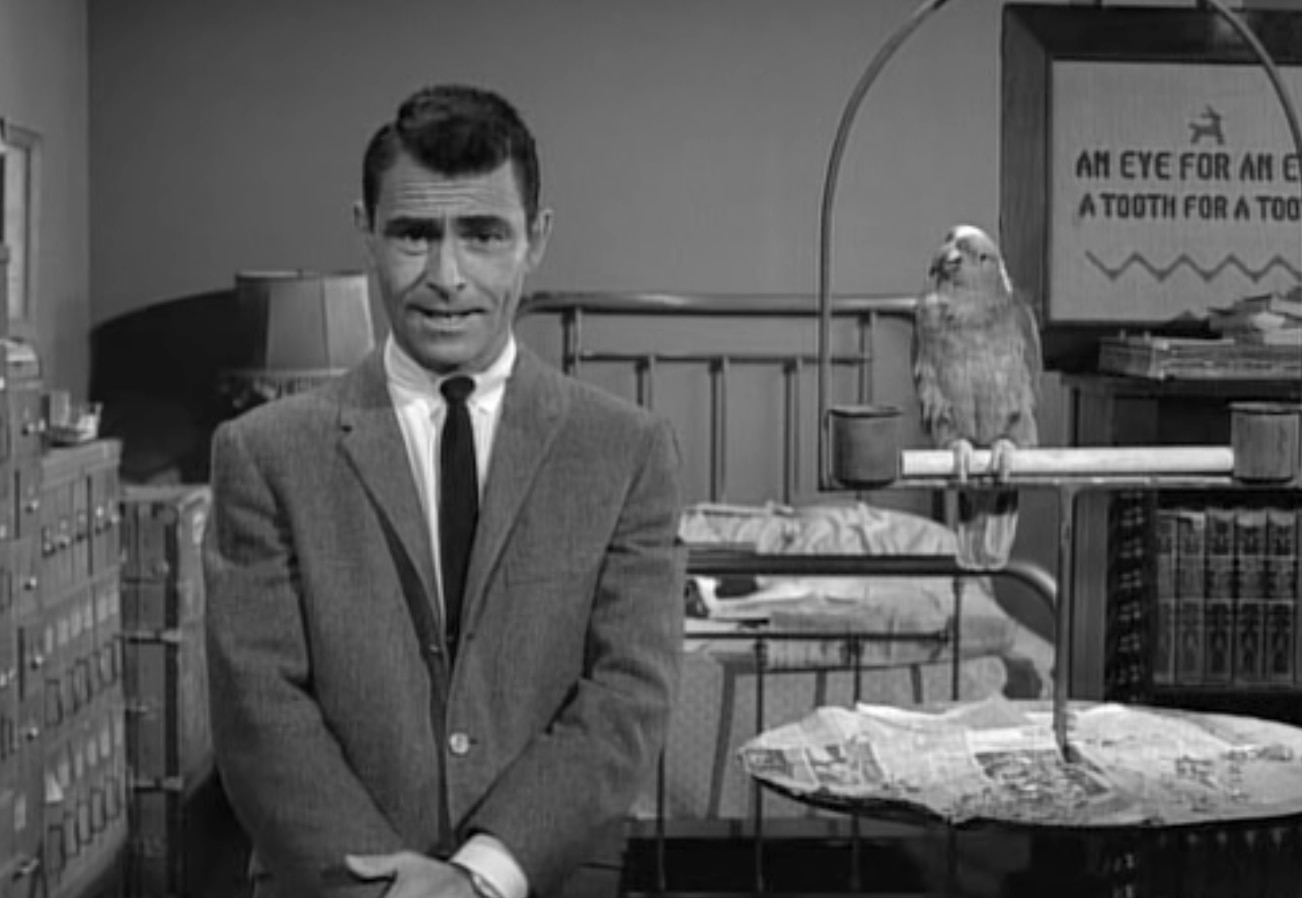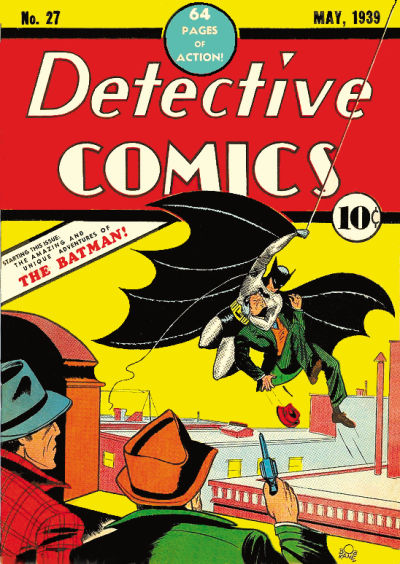Until this point, every piece of science fiction we have seen has been in the form of either a novel, a short story, or a serialized story. The written word was the medium that science fiction was born into, and it continues to be important to the genre to this day. However, after the turn of the century, many new forms of entertainment exploded onto the scene, and science fiction was often at the forefront of their popularity. Here are five new mediums that were monumental for the growth of science fiction in the twentieth century. This list is in chronological order based on the development of the medium.
5. The Motion Picture (1893)-

[A Trip to the Moon, 1902]
The kinetoscope, or motion picture device, was invented in Edison’s labs, mainly by an employee of Mr. Edison’s, William Dickson. The first ‘film’ shown publicly, was the brief Blacksmith Scene, released in 1893. The medium quickly became very popular, with one of the earliest movie theatres, The Electric Theatre, opening in Los Angeles in 1902.

Science fiction creators were quick to utilize the genre as a way to project their visions of the future onto other people's’ imaginations. What is widely recognized as the first science fiction film, A Trip to the Moon, was released by French director Georges Méliès in 1902. The first two-hour, or ‘feature length’, sci-fi film was the revolutionary tale of the broken utopia Metropolis, directed by Fritz Lang and released in 1927. Science fiction has continued to be on the cutting edge of the motion picture industry ever since.
4. Radio (1910)-

On January 13, 1910, the first radio transmission was broadcast from the Metropolitan Opera House. The technology quickly became a popular means of telling stories, and science fiction stories constituted a great deal of these.

[Orson Welles]
One of the earliest radio programs of science fiction was the serialized Buck Rogers in the Twenty-Fifth Century which premiered in 1932. It told the story of a time-lost war veteran and his adventures in the future. Another notable accomplishment of sci-fi radio is the adaptation of The War of the Worlds, directed by and starring Orson Welles. Released as a sort of prank on Halloween night of 1938, this broadcast had some listeners believing Martians really were invading the planet.
3. Television (1926)-
The 1920s saw the success of early motion picture broadcast technologies. The first television broadcast was a picture of a moving human face on January 26, 1926. Television soon became an important method of communication and storytelling, especially for serialized stories.

[Rod Serling on The Twilight Zone]
Captain Video was one of the first science fiction television show is in America, lasting from 1949-1955. Perhaps one of the most influential speculative fiction shows ever was The Twilight Zone, created by Rod Serling. It’s anthology of strange and twisted tales has been pillaged by sci-fi writers of all sorts ever since its inception. Two other incredibly influential and long lasting tv series of the genre are the British-made Dr. Who (1963), and American Star Trek (1966).
2. Comic Books (1933)-

The first publication in the modern strain of comics was Famous Funnies, a comedic magazine first released in 1933. The medium of comic books became the birthplace of the superhero story. The quintessential superhero, Superman, made his debut in the June 1938 issue of Action Comics, in the story “A Champion of the Oppressed”.

The masked detective who would later become Superman’s ally and foil, Batman, first appeared in Detective Comics in May 1939.
1. Video Games (1948)-

[Spacewar!]
The earliest known interactive video device was a missile simulator, based off radar displays from World War II. It was patented by Thomas Goldsmith Jr. and Estle Ray Mann in 1948. Early video games certainly seemed like something out of sci-fi. As the visual aspect of video games became more prominent, science fiction often served as a basis for the mood and setting. One of the first examples of this is Spacewar! released on the PDP-1 in 1961.

Eventually, as story became more important to games, sci-fi was a dominant genre. Many fascinating science fiction stories have been told through video games, such as the haunting science-gone-awry tale of the Portal series (2007, 2011).
Keep on glowing in the dark,
Elora
No comments:
Post a Comment